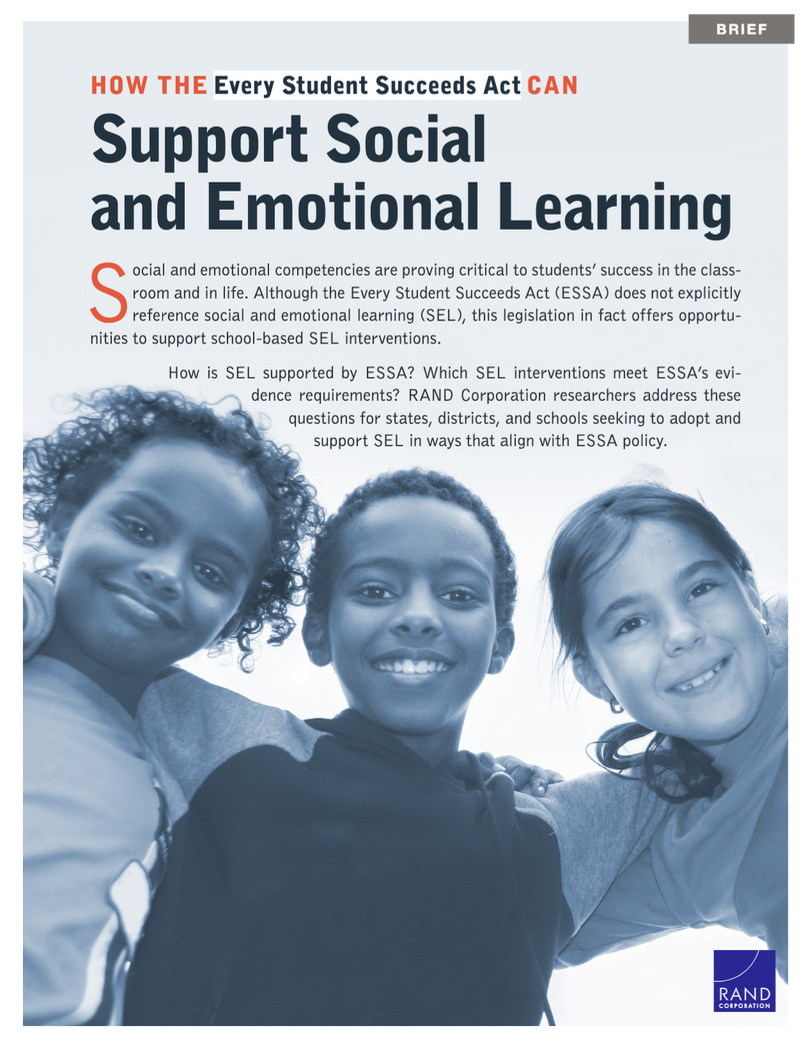Funding and Research
Movement & Social Emotional Learning
Students need more than proficiency in core subjects to be successful – an increasing amount of research tells us that qualities like perseverance, active listening, empathy and good decision-making, as well as physical activity and healthy lifestyle habits, help our youth succeed both academically and in life. This has prompted more schools to become interested in integrating social and emotional learning (SEL) and movement into their school culture and curriculums.
Rooted in extensive research on the positive benefits of movement and SEL for students and school communities, the Athlos Movement and Character Program provides a robust approach to educating and supporting the whole child.
Funding
State and school district education leaders can find support for SEL programs under the federal law that governs K-12 public education policy, the Every Student Succeeds Act (ESSA). While it does not explicitly reference SEL, the law does support programming that improves school conditions for learning, peer interactions, volunteerism, community involvement and instructional practices for developing relationship-building skills. These all build social and emotional skills in students.
According to the Wallace Foundation ESSA brief and RAND Corporation study, school leaders are able to pursue three potential funding streams for SEL interventions.
- Title I – Improving the Academic Achievement of the Disadvantaged: provides opportunities to incorporate SEL into school operations through school-wide assistance programs, targeted assistance programs and school support and improvement activities.
- Title II – Preparing, Training, and Recruiting High-Quality Teachers, Principals, or Other School Leaders: allows schools to seek funds for building educators’ capacity to provide SEL instruction or SEL-related professional development of school leaders.
- Title IV – 21st-Century Schools: authorizes funding to support SEL interventions that improve the educational opportunities of students.
The legislation outlines 4 Tiers of research based evidence:
- Strong (Tier I)
- Moderate (Tier II)
- Promising (Tier III)
- Demonstrating a Rationale (Tier IV) .
The Athlos Movement and Character program currently qualifies for ESSA funding under Tier IV. Per Tier IV requirements and the research provided below, our program is “supported by a strong rationale for believing the intervention is likely to improve the target outcomes, and an evaluation is under way.”
Research Alignment
The Athlos Movement and Character Program provides intentional integration of Physical Education and SEL. Its goal is to support whole child development and transform school communities through the unique combination of movement and character development.
The program includes:
- K12 Physical Education (PE) Curriculum and support resources with intentional SEL integration
- Robust SEL Lesson and Resources for use in PE, general education and school-wide
The program is aligned to CASEL’s 5 core competencies, and all PE lessons and units are aligned to the SHAPE national PE standards.
CASEL Alignment
CASEL, the Collaborative for Academic, Social and Emotional Learning is recognized as the trusted source for knowledge about high quality, evidence-based SEL. The 12 Performance Character traits embedded in the program are intentionally designed to support the 5 CASEL competencies, as shown below.

SHAPE Alignment
SHAPE America, the Society of Health and Physical Educators, is recognized as the foundation for well-designed PE programs across the country. View the document below for a breakdown on how each of the Athlos athletic curriculum levels aligns.

Impact Data
The program has been implemented, to date, in over 20 schools across the United States. Below is a summary of the resulting impact data from a subset of these implementing schools.


